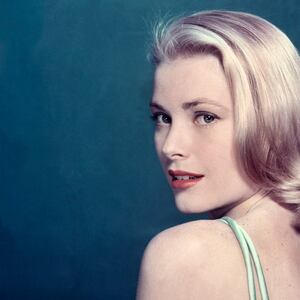GRANVILLE, France—As a child, designer Christian Dior lived in a pretty pink house, overlooking long sandy beaches and the swell of the Atlantic in Normandy.
His family left for Paris when Dior was only five, and the home is one of the only fashion museums in France dedicated to a designer. Musée Christian Dior’s new exhibition Grace Kelly: Princess in Dior (to November 17) celebrates the Dior wardrobe of the Academy Award-winning actress turned Monaco royalty.
Alfred Hitchcock’s beloved muse worked a gig at the Cannes Film Festival in 1955 into a new day job as Princess of Monaco, after she met at the festival that year, Prince Rainier III of Monaco, who was to become her husband.
ADVERTISEMENT
Although she called herself a feminist—and, hey, she did become both a top movie star and a princess—Grace Kelly subsequently ditched the film career to live every Barbie doll’s dream. She went from Hollywood to French Riviera royalty overnight upon marrying Rainier.
For her new role, Grace Kelly needed outfits. Step in Dior and its designer at the time, Marc Bohan. Eighty-five of mostly-his Dior creations for Kelly—who died at the age of 52 following a stroke when her car plummeted from a mountainside road—show just how princesses from yesteryear dressed.
There were no bad hair days or outings to the local gas station for Doritos in Juicy Couture. Kelly, we learn, liked to dress both simply and casually which she still managed to do as a princess whilst maintaining royal protocol. She never went more casual than shirt dresses or fisherman’s smocks. But those were probably the Juicy Coutures of her day.
Taking up the entire house, the exhibition includes accessories, perfumes, Dior baby clothes, and vintage magazines. Dozens of these show Grace Kelly on the cover at a time when Photoshop wasn’t around. She had dimples and even wrinkles.
Coinciding with the 90th anniversary of her birth, the exhibition puts the spotlight on her style and personality, rather than her private life. Bohan, who became Dior’s Creative Director in 1960, found in Kelly the embodiment of his style.
“She was emblematic of my style,” Bohan said in an interview published in the exhibition’s book. “A style that captured attention but was never aggressive. Shirtdresses, blouses and crepe de chine suited her tastes perfectly.”
Co-Curator Florence Müller told the fashion trade paper WWD that Kelly brought about change in how much and the way princesses were seen in public.
“Before Grace of Monaco, Princesses remained a private affair,” she said. “Princesses weren’t seen in public as much or photographed by the press. She represents a change of etiquette. A real rupture.”
As per the show notes: “From grand balls to official trips around the world, along with artistic events and charitable works, this exhibition reveals the princess’ ability to always choose outfits appropriate to the occasion, with a sense of spectacle inherited from her time in Hollywood tempered by the sober necessities of her royal status. In her family and private life, the Princess Grace prized comfort, contemporary simplicity and a sporty allure that traced her origin to her American youth.”
The exhibition is divided into thematic sections, each accompanied by photographs, magazine clippings and sometimes sketches of Grace Kelly, or some of the designs.
It begins in the former living room with, ‘A Princess in Ball Gowns’ where we discover how Dior helped develop her classical elegance to inform an appropriate wardrobe for a princess. Among the dozen-odd pieces in this first display cabinet are a white satin dress, worn for her engagement, and a simple black and white Colinette dress from Fall/Winter 1956, worn for her first official portrait.
After this flamboyant selection of outfits, which includes a yellow canary frilly coat from Spring/Summer 1981, comes a more somber selection of outfits used for official outings. Some of the coats look like something women would have worn to the ammunition factory, during the war. Others looks frumpy to the modern eye. The materials seem threadbare compared to today’s super textiles.
Many of the pieces, throughout the collection, are monotone in color. There’s a section on sporty looks and shirt dresses, which we learn the princess favored. We also learn that she dressed her babies in Dior before Dior Baby was launched.
There’s a distinction to be drawn between the many evening gowns, with long sleeves, and the knee-length daywear with a more sporty aesthetic. Some of it is a bit Pierre Cardin without the edge. A couple of the pieces look exquisite and cool, including a shimmering bottle green dress with a scaly surface, and distinctive use of feather around the wrists and neck, from Fall/Winter 1971.
Who knew she liked shirt dresses? It is a pleasure to see her simple elegance reverberate throughout this beautifully maintained house.
The clothes are beautiful, but this critic wondered more and more about the dramatic choice Kelly had made: marriage over career. I found myself asking what was wrong with flying back to LA for work, in-between royal outings? I thought of an actress I worked with recently who didn’t want to be dressed in any way other than how she chose, which meant the fashion houses would not dress her. We think it sounds glamorous to have a fashion house want to dress us, but is it all that? What freedoms did Princess Grace give up in the name of fashion, family, and marriage?







